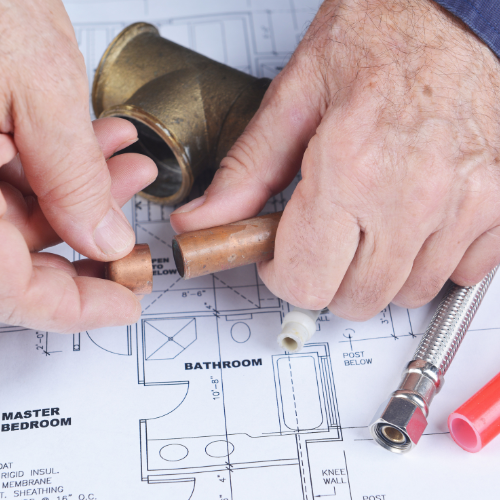What Does MIP Stand For in Plumbing?
by Admin

There are many acronyms in the plumbing industry that can be confusing. Some of these are used to refer to different types of pipe threads, but others are more specific and can help distinguish between fittings. For example, MIP stands for Male Iron Pipe and FIP stands for Female Iron Pipe. These are both types of fittings that can be found in the piping systems of homes and other buildings. Both have their own advantages, but they are not interchangeable.
MIP and FIP fittings are made of materials like copper or steel. They have a special type of threaded end that screws into another piece of pipe. These threaded pipes are usually part of heavy-duty piping, such as in highly pressurized systems or for pipes that carry dangerous materials like natural gas. These pipe threads are thicker than other types of piping, so they can better withstand the pressure of the pipe that they are connected to. They are also easier to disassemble, which makes it more convenient when it comes time to make repairs or upgrades.
Most people know that MIP and FIP stand for male and female iron pipe, but they may not be aware that they can also refer to a type of thread. These kinds of threads are often referred to as NPT or National Pipe Thread, and they can be found in all sorts of applications. This is why it is important to understand what these terms mean so that you can be sure you are using the right kind of fittings in your piping system.
The main difference between MIP and FIP is that MIP fittings have threads on the inside of the pipe while FIP fittings have threads on the outside. They can be used in conjunction with one another, but they are not compatible with other types of pipe threads. MIP and FPT fittings are typically sealed with pipe dope or wrapped in teflon tape to ensure that they are watertight.
In addition to the different types of threads, there are also different sizes of these kinds of fittings. Some of them are very large and have threads that are quite thick, while other ones are much thinner and are designed for low-pressure applications.
When choosing the right size of MIP or FIP fitting, it is essential to take into account the maximum allowable operating pressure (MAOP) of the piping system. This is the pressure that the piping can withstand under steady state conditions and should not be exceeded. Incidental pressures above MAOP, such as surges or malfunctions of pressure control equipment, are allowable if they occur with limited frequency and duration. To avoid causing damage, you should always use the correct size of fitting for your situation.
7004 Colonial Ct, North Wales, PA 19454
There are many acronyms in the plumbing industry that can be confusing. Some of these are used to refer to different types of pipe threads, but others are more specific and can help distinguish between fittings. For example, MIP stands for Male Iron Pipe and FIP stands for Female Iron Pipe. These are both types…
Recent Posts
- Understanding the Core Principles and Approaches of Integrative Medicine in Modern Healthcare
- Unmatched Pest Control Services in St. Petersburg, FL
- The Leading Car Accident Lawyer in Rockville, MD
- Essential Tips for Maintaining Veneers and Ensuring Long-Term Dental Health
- How to Choose the Right HVAC System for Your Lexington Home
